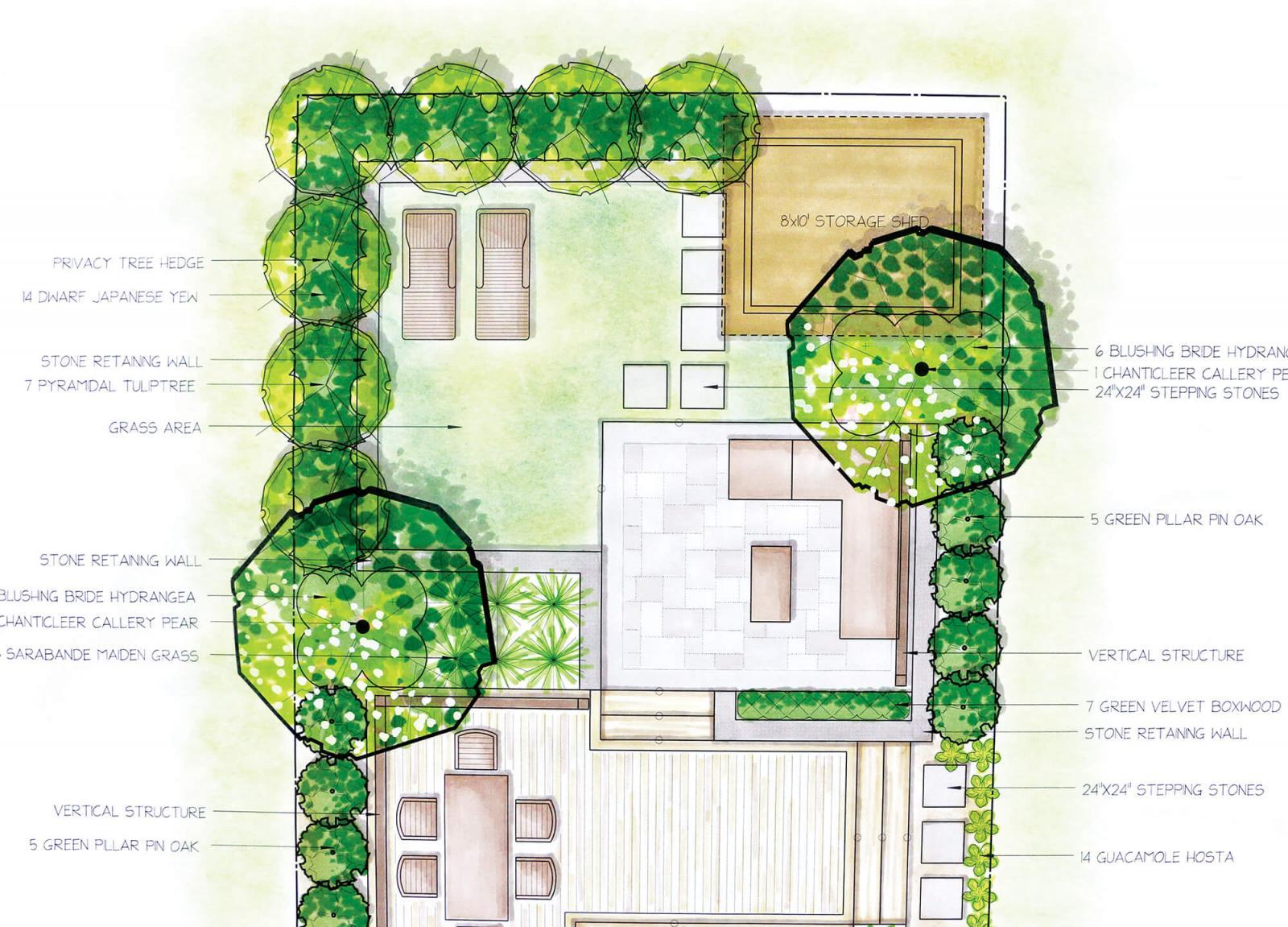April 24, 2017

Contractors, designers and the value of a good plan
BY AUDRIANA VANDERWERF, CLDLandscape design has proven to be the greatest career choice for me and many of you — my colleagues! Combining ingenuity, resources and know-how with client budget and wish lists bestows each day with fun, stress, revelations, hair-pulling, elation and ultimate satisfaction. We are on-site, in office, in vehicles — often the vehicle IS the office — making decisions and creating solutions every hour of our exciting days. Being outdoors is an enviable bonus: refreshing, healthy and perfect soul food.
We’ve seen a lot of advancement in this career, from sketching on napkins to the performance technology of today. Landscape design education has gone from Plant ID in night school, to three-year college programs and university degrees, with life-time support from peers, such as CNLA members. Indeed, what was once an offering by gardeners is a bustling career on its own.
Perhaps the biggest struggle has been taking clients along with us on this ever-advancing path. While impressed with ideas and remedies they ‘never would have thought of,’ they further enjoy the visuals of computer assisted designs, perhaps with colour and perspective enhancements, yet many still don’t understand why they have to pay for it! Perhaps their parents and grandparents got designs for “free,” and they aren’t aware of industry advances.
“Most clients have no idea what is involved in the design process,” says Andrea Weddum, Senior Designer with Gelderman Landscape Services in Waterdown, Ont. “The key is to communicate very clearly what exactly it is that you will deliver to them.”
I am often asked what the design fee includes, and once all deliverables are explained, people realize they would hardly expect an interior design or a home design to be free. How is an exterior plan any different? With some veterans charging more, the national average rate for a landscape master plan by a Certified Landscape Designer (CLD) is $75-100 per hour, enough to raise the eyebrows of many homeowners. Chris Clayton, a Toronto-based Landscape Architect and CLD, trusts his instincts when first meeting with clients. “You can price yourself out of the market; however you have to decide how low you can go. I went on many initial calls where it was obvious after a short conversation that they couldn’t afford me or didn’t want to pay my fees. You then politely tell the prospective client your fees one last time, and ask them to get back to you should they decide to go ahead with the project.”
This is notable. While it can be initially intimidating to stand in front of potential clients and have them question your fees, we must remember our value and maintain our numbers. “There is no set formula to determine fees; you have to go out and try,” Clayton says. Your overall relationship with the client may begin or end here, and it’s as much your choice as theirs. Just as the customers are searching for the designer who is the ‘right fit,’ we must also consult with discretion.
“An honorable sense of ethic, great talent and good chemistry between clients and designers are priceless,” says Julie Moore of Modern Landscape Designers in Whitby, Ont. “If people do not see my talent nor value my expertise, then it wouldn’t be enjoyable to work together.” Her advice? “Be selective and enjoy your work with clients that recognize your talents and value your landscape design flair.”
Critically, professionals who work for design/build contractors need to communicate the value of the design to every client. It’s not just about the sale of labour or getting the job. Contractors who design or employ a designer do their business and their industry a great disservice by negotiating a free plan for the contract. Sure, we know you hide the fee in the estimate, but the perception is, the time and talent that went into the plan is disposable. And that’s a giant step backwards.
When executed by experts, landscape designs develop solutions to grading and slopes, existing structures and plants, neighbours, drainage, allergies, spatial problems and disagreements between the parties — to name a few. Add to that creative transitions without which the plan wouldn’t flow. But have you communicated this to your clients? We can’t forget that what comes second nature to us is a valuable commodity to others.
Weddum agrees: “We have to know our own value in order to sell our own value. If a potential client is trying to barter with you on a price or asking for a free design, these are warning signs that hours of work will not be paid for, or appreciated, causing frustration and regret. Who needs that?”
Audriana VanderWerf is an Ontario-based landscape design professional and Certified Landscape Designer.